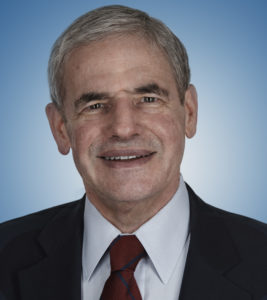The August 23, 2010 edition of the Wall Street Journal story, “Fed Split on Move to Bolster Sluggish Economy,” reports on the August 10, 2010 meeting of top officials of the Federal Reserve System. The article advises, “After steering the economy away from another Great Depression, Mr. Bernanke confronts a painfully slow rebound.”
Correction: The Fed is in fact helping prolong the recession. It has been inhibiting the adjustments that are necessary to correct the malinvestments—the Austrian School of economics term for misallocation of capital—caused by the Fed’s last period of easy money that began in 2001. Low interest rates, along with “stimulus” spending, have helped keep Japan stagnant for almost two decades, and the U.S. is repeating these errors.
Mr. Bernanke warns about deflation, by which he apparently means a decline in prices and wages, but this is exactly what the economy needs in order to recover. Deflation—a contraction of credit and spending—is the effect of a downturn, not the cause. Falling prices and wages in turn are the effect of the deflation, and the adaptation to it.
The Fed’s claim that deflation is dangerous is false, and its preference for inflation favors the government and banks, at the expense of the public. Government benefits from inflation because it allows it to freely spend, while silently taxing holders of dollars through depreciating the currency. Banks, a favored special interest, also prefer inflation to deflation. Inflation helps prevent a decline in housing prices and other assets that jeopardizes repayment of mortgages and other loans.
The Fed, like other central banks, serves as a central planner, determining the supply of money, manipulating interest rates, and, recently, bailing out favored firms. Central planning always fails. The Fed has failed to maintain the stability of the dollar (depreciation of over 95% since 1913) has caused the booms and busts that plague us, and prolongs recessions through interfering with necessary adjustments.
The article notes a “split” among Fed officials concerning specific policy, but this is meaningless. The real split is between the supporters of the Fed and those who recognize the need to end its dismal reign.
References:
1. “Let the Recession Run Its Course,” Martin Masse, Mises Daily, 03/19/2001.
2. “Nonsense about Deflation,” Robert Higgs, Mises Daily, 12/02/2008.
3. “Deflation and Liberty,” Jörg Guido Hülsmann, Mises Daily, 12/13/2008.
4. “Falling Prices Are the Antidote to Deflation,” George Reisman, Mises Daily, 01/14/2009.
5. “Synchronized Boom, Synchronized Bust,” Marc Faber, Wall Street Journal, 02/18/09.
6. “Economists’ Pro-Fed Position Discredits Its Signers,” Robert Higgs, The Beacon, The Independent Institute, 07/18/2009.
7. “The Hubris of Central Bankers and the Ghosts of Deflation Past, Richard Ebeling, The Future of Freedom Foundation, 02/01/03.
8. “Murray Rothbard and the Deflation Bogey,” William L. Anderson, Mises Daily, 08/10/2010.
[Links updated: November 8, 2015]




